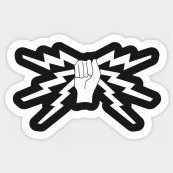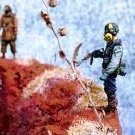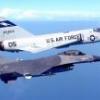-
Posts
585 -
Joined
-
Last visited
spruecutter's Achievements

Obsessed Member (4/9)
966
Reputation
-

Spitfire XIV, Belgische Militaire Luchtvaart
spruecutter replied to modelling minion's topic in Baby Boomers GB 1946-1964
Happy to help, Craig! The Silhouette Studio software for creating masks is easy to use. The challenge is always finding a military style font but a good starting point is www.volareproducts.com. The site owner has various aircraft fonts for downloading.- 64 replies
-
- 2
-

-
- airfx
- Spitfire XIV
-
(and 1 more)
Tagged with:
-
A very nice result of an unusual aircraft, well done!
-

Revell 1/32 BAe Hawk T Mk1, 74 Squadron
spruecutter replied to Red Dot's topic in Ready for Inspection - Aircraft
Despite all your trials and tribulations with the kit, you have created a really nice model. The seats and access ladder look particularly good. I guess you will now be having a long lie-down in a darkened room?! Top job all round! -
First class work. Really beautifully executed.
-

ICM 1/32 Boeing stearman
spruecutter replied to airfixpeter's topic in Ready for Inspection - Aircraft
Very nicely done with a colourful end result. -

A couple of US Navy F-4 Phantoms
spruecutter replied to spruecutter's topic in Ready for Inspection - Aircraft
You're right. David. Hasegawa's F-4Bs are not a quick build by any stretch. A small example - instead of providing stabilators with and without the triangular strengthening plate (I think that was what it was), the builder is required to scrape off the triangle, being super careful to achieve a smooth surface and then rescribe the missing panel lines. What should be a 10 second clean up of a part ends up taking an hour! -
I was asked to build a couple of US Navy F-4 Phantoms for a friend of a friend. The kits came from the 1/72 Hasegawa F-4B/N boxing "CVW-19 Combo". While I built the kits pretty much out of the box, they proved to be quite an involved build, easily over 100 hours of work for the pair. Not because I added any detail - it's more down to the complexity of the finishing: the intricate masking for the metallic back area, trimming the decals, making masks for some of the insignia. The first off the production line was an F-4B - the very smart "Black Aces" scheme of VF-41. The second one to be completed was a F-4N in the familiar "Jolly Rogers" scheme of VF-84. The Hasegawa kit is very nicely moulded with fine panel lines. It did take a fair bit of effort to blend in the intakes and deal with the seam by the exhaust pipes. I had to sand very carefully to avoid damaging the trailing edge of the wings. Horizontal sanding was very much the order of the day, definitely not up and down. The fit of the stabilators was a bit floppy so I used a couple of set squares to get both to set at the same angle. Likewise, the fit of the undercarriage was also a bit floppy so I used set squares again to get the legs to stay straight while the glue dried. I wanted to keep the weathering quite subtle. I used two types of Flory wash - Grey for the top surface and Dark Dirt for the underside. The Hasegawa decals were OK but not brilliant. I was quite worried about the carrier film showing so wherever possible I trimmed the decals to reduce the risk of silvering. The NAVY and 1489 were sprayed using home-made masks. One very useful gadget that I used for the first time was a coffee cup warmer to keep the decal water warm. It saves the hassle of getting up every 15 minutes to replenish with warmer water. I picked up this tip from a German modelmaking forum. Anyway, I said goodbye to the models today. They were collected by my good mate @Red Dot to take to his mate Patrick in Belgium next week. Cheers Richard C.
- 19 replies
-
- 77
-

-

-
Quelle belle représentation, c'est magnifique! Very impressed with your weathering skills.
-

Hasegawa's 1/32 P-40E
spruecutter replied to Michael Taylor's topic in Ready for Inspection - Aircraft
Very nice! -

ECN-135 1/72nd AMtech Wright Patterson AFB 1977
spruecutter replied to Wdedig's topic in Ready for Inspection - Aircraft
A very fine result. You have done an excellent job with the black pinstriping. That is no mean feat given the size of the airframe. -
Bravo! Un très bon résultat! What paints did you use for the brown and green camouflage?
-
A great set of pictures, Andy. That Hercules looks almost as good as an enthusiastically weathered model on one of the SIG stands at Telford! 😁
-
Exceptional work! I particularly like the finish on the tracks.
- 72 replies
-
- 1
-

-
- CHAR 2C
- FRENCH TANKS
-
(and 1 more)
Tagged with:
-
Dodgy hand painting?! I was very impressed with your solution for the black outline and creating the skull and fez.
-
Very happy to have lent you a hand with this build, Craig! The request to make the masks for the '1' and the '3' in the fuselage codes was welcome as it meant another chance to practice with my Silhouette Cutter. Sourcing the '3' was straightforward - I was able to make use of a downloadable font for the USAAF and size it to 12mm. The non-standard '1' was a different story. After my wife remarked that the long base of the '1' made it look like an upside 'T', I cobbled together a new version in PowerPoint by adding a small triangle shape to the top of a 'T' tipped onto its head. I could then import this fabricated '1' into the Silhouette software.





